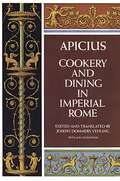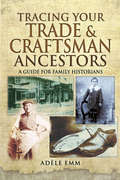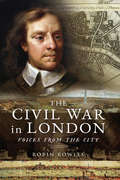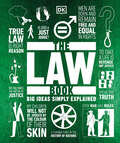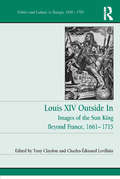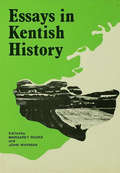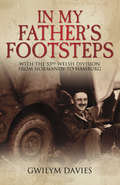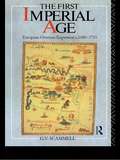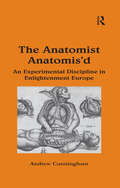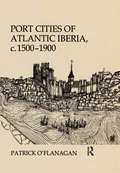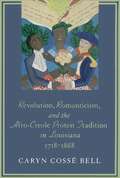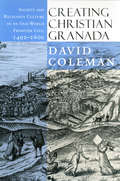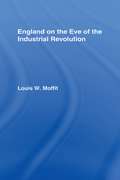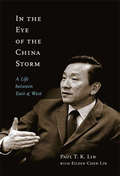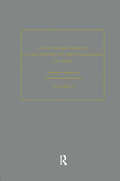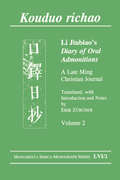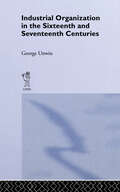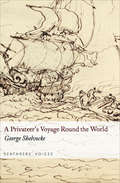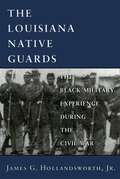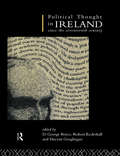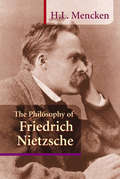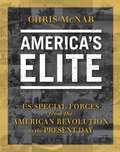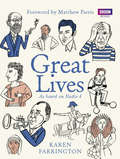- Table View
- List View
The Rise of the British Coal Industry
by J. U. NefFirst Published in 1966. Routledge is an imprint of Taylor & Francis, an informa company.
Cookery and Dining in Imperial Rome
by Apicius Joseph Dommers VehlingOldest known cookbook in existence offers readers a clear picture of what foods Romans ate, how they prepared them. Actual recipes -- from fig fed pork and salt fish balls in wine sauce to pumpkin Alexander style, nut custard turnovers and rose pie. 49 illustrations.
Tracing Your Trade & Craftsman Ancestors: A Guide for Family Historians (Tracing Your Ancestors)
by Adéle EmmAlmost all of us have a tradesman or craftsman a butcher, baker or candlestick maker somewhere in our ancestry, and Adle Emm's handbook is the perfect guide to finding out about them about their lives, their work and the world they lived in. She introduces the many trades and crafts, looks at their practices and long traditions, and identifies and explains the many sources you can go to in order to discover more about them and their families. Chapters cover the guilds, the merchants, shopkeepers, builders, smiths and metalworkers, cordwainers and shoemakers, tailors and dressmakers, coopers, wheelwrights and carriage-makers, and a long list of other trades and crafts. The training and apprenticeships of individuals who worked in these trades and crafts are described, as are their skills and working conditions and the genealogical resources that preserve their history and give an insight into their lives. A chapter covers the general sources that researchers can turn to the National Archives, the census, newspapers, wills, and websites and gives advice on how to use them. Adle Emm's introduction will be fascinating reading for anyone who is researching the social or family history of trades and crafts.
The Civil War in London: Voices from the City
by Robin RowlesThe Civil War years of the 1640s were amongst the most tumultuous in British history. The conflict between King Charles I and Parliament strained and split the social fabric of the British Isles. People of all classes who had previously coexisted peacefully found themselves opposing each other on political, religious, and economic grounds. Society was literally 'by the sword divided'.Much has been written on the subject to date. This book is different. London is its focus, with key players such as the Lord Mayor, the livery companies, the Church, and citizens, viewed through the city's lens and the streets around St Paul's and Cheapside. In looking at seemingly everyday events, unusual questions are raised: for example, where can you find a little known statue of Oliver Cromwell; what happened to the Cheapside Cross; who was Nemehiah Wallington and why was he important?The result of a London walk devised by the author, the books learned yet accessible approach will appeal to anyone interested in a new way of looking at a popular event in history. Bookended by the death of a Tudor queen and the beheading of a Stuart king, its chapters walk us through what happened in-between.
The Law Book (DK Big Ideas)
by DKLearn about the most important legal milestones in history in The Law Book.Part of the fascinating Big Ideas series, this book tackles tricky topics and themes in a simple and easy to follow format. Learn about Law in this overview guide to the subject, great for novices looking to find out more and experts wishing to refresh their knowledge alike! The Law Book brings a fresh and vibrant take on the topic through eye-catching graphics and diagrams to immerse yourself in. This captivating book will broaden your understanding of Law, with:- More than 90 ground-breaking legal milestones- Packed with facts, charts, timelines and graphs to help explain core concepts- A visual approach to big subjects with striking illustrations and graphics throughout- Easy to follow text makes topics accessible for people at any level of understandingThe Law Book is a captivating introduction to the legal precedents, and religious, political, and moral codes that have shaped the world we live in, aimed at adults with an interest in the subject and students wanting to gain more of an overview. Discover the most important milestones in legal history, from the Code of Hammurabi to groundbreaking legislation including Magna Carta and the Abolition of the Slave Trade Act, all through exciting text and bold graphics.Your Law Questions, Simply ExplainedThis engaging overview goes into legal history across the world, all the way into the 21st century, with copyright in the digital age, same-sex marriage, and the &“right to be forgotten&”. If you thought it was difficult to learn about legislations and legal history, The Law Book presents key information in an easy to follow layout. Learn about the most important breakthroughs, like the fight for universal suffrage and workers&’ rights, and the establishment of international legal bodies like INTERPOL and the European Court of Justice.The Big Ideas SeriesWith millions of copies sold worldwide, The Law Book is part of the award-winning Big Ideas series from DK. The series uses striking graphics along with engaging writing, making big topics easy to understand.
Louis XIV Outside In: Images of the Sun King Beyond France, 1661-1715 (Politics and Culture in Europe, 1650-1750)
by Tony Claydon Charles-Édouard LevillainLouis XIV - the ’Sun King’ - casts a long shadow over the history of seventeenth- and eighteenth-century Europe. Yet while he has been the subject of numerous works, much of the scholarship remains firmly rooted within national frameworks and traditions. Thus in France Louis is still chiefly remembered for the splendid baroque culture his reign ushered in, and his political achievements in wielding together a strong centralised French state; whereas in England, the Netherlands and other protestant states, his memory is that of an aggressive military tyrant and persecutor of non-Catholics. In order to try to break free of such parochial strictures, this volume builds upon the approach of scholars such as Ragnhild Hatton who have attempted to situate Louis’ legacy within broader, pan-European context. But where Hatton focused primarily on geo-political themes, Louis XIV Outside In introduces current interests in cultural history, integrating aspects of artistic, literary and musical themes. In particular it examines the formulation and use of images of Louis XIV abroad, concentrating on Louis' neighbours in north west Europe. This broad geographical coverage demonstrates how images of Louis XIV were moulded by the polemical needs of people far from Versailles, and distorted from any French originals by the particular political and cultural circumstances of diverse nations. Because the French regime’s ability to control the public image of its leader was very limited, the collection highlights how - at least in the sphere of public presentation - his power was frequently denied, subverted, or appropriated to very different purposes, questioning the limits of his absolutism which has also been such a feature of recent work.
Essays in Kentish History Cb: Essays Kentish History
by MARGARET ROAKE AND JOHN WHYMANFirst published in 1976. Routledge is an imprint of Taylor & Francis, an informa company.
In My Father's Footsteps: With the 53rd Welsh Division from Normandy to Hamburg
by Gwilym DaviesIn 1944-45, Capt. G.H. Davies served with the hard-fighting 53rd Welsh Division. He was an artillery officer in command of a battery of 25-pdr field guns and saw action from Normandy to the final surrender of Nazi Germany. Capt. Davies was present at the Normandy battles, the fierce fighting for s'Hertogenbosch and the Battle of Arnhem.During the course of the war, Capt. Davies kept a diary and also snatched a few photographs on his treasured camera. When the opportunity arose Capt. Davies liberated a camera from a fallen SS officer and, after the war, had the film developed. The film contained graphic images of the war from the German side of the line.Seventy years on from the events, the wartime diary, the photographs of the guns and the photographs taken by the dead SS officer were the inspiration for the son of Capt. Davies, television producer and writer Gwilym Davies, to undertake an emotional return to the battlefields, which his father had described in his diary.The result of that pilgrimage is an important new book which builds upon the wartime diary and the photographs to produce a powerful record of one man's war service with the guns of the 53rd Welsh Division. The book also contrasts the experience of Capt. Davies with those of the Germans on the other side of the line. Gwilym Davies is himself an accomplished photographer and his photographs of the 70th anniversary celebrations and the memorials provide a poignant counterpoint to the events of 1944.
The First Imperial Age: European Overseas Expansion 1500-1715
by Geoffrey V. ScammellFirst published in 1989. Routledge is an imprint of Taylor & Francis, an informa company.
The Anatomist Anatomis'd: An Experimental Discipline in Enlightenment Europe (The History of Medicine in Context)
by Andrew CunninghamThe eighteenth-century practitioners of anatomy saw their own period as 'the perfection of anatomy'. This book looks at the investigation of anatomy in the 'long' eighteenth century in disciplinary terms. This means looking in a novel way not only at the practical aspects of anatomizing but also at questions of how one became an anatomist, where and how the discipline was practised, what the point was of its practice, what counted as sub-disciplines of anatomy, and the nature of arguments over anatomical facts and priority of discovery. In particular pathology, generation and birth, and comparative anatomy are shown to have been linked together as sub-disciplines of anatomy. At first sight anatomy seems the most long-lived and stable of medical disciplines, from Galen and Vesalius to the present. But Cunningham argues that anatomy was, like so many other areas of knowledge, changed irrevocably around the end of the eighteenth century, with the creation of new disciplines, new forms of knowledge and new ways of investigation. The 'long' eighteenth century, therefore, was not only the highpoint of anatomy but also the endpoint of old anatomy.
Port Cities of Atlantic Iberia, c. 1500–1900
by Patrick O'FlanaganCharting the evolution of the port cities of Atlantic Spain and Portugal over four centuries, this book examines the often dynamic interaction between the large privileged ports of Lisbon, Seville and Cadiz (the Metropoles) and the smaller ports of, among others, Oporto, Corunna and Santander (the Second Tier). The book particularly focuses on the implications of state-sponsored commercial policies for the main ports of Atlantic Iberia during the monopoly period extending from 1503 to c.1778, and briefly considers the implications of the suppression of monopoly for these centres over the remainder of the nineteenth century. Patrick O'Flanagan employs a wealth of source material to provide a multi-faceted survey of the growth of these port cities, moving deftly from local concerns to regional developments and global relationships. Beyond Spain and Portugal, the book also considers the important role played by the Atlantic archipelagoes of the Canaries, the Azores and Madeira. This formidable study is an essential addition to the library of those studying Atlantic Iberia, historical geography, and transatlantic economic relationships of this period.
Revolution, Romanticism, and the Afro-Creole Protest Tradition in Louisiana, 1718–1868
by Caryn Cossé BellWith the Federal occupation of New Orleans in 1862, Afro-Creole leaders in that city, along with their white allies, seized upon the ideals of the American and French Revolutions and images of revolutionary events in the French Caribbean and demanded Liberté, Egalité, Fraternité. Their republican idealism produced the postwar South's most progressive vision of the future. Caryn Cossé Bell, in her impressive, sweeping study, traces the eighteenth-century origins of this Afro-Creole political and intellectual heritage, its evolution in antebellum New Orleans, and its impact on the Civil War and Reconstruction.
Creating Christian Granada
by David ColemanCreating Christian Granada provides a richly detailed examination of a critical and transitional episode in Spain's march to global empire. The city of Granada-Islam's final bastion on the Iberian peninsula-surrendered to the control of Spain's "Catholic Monarchs" Isabella and Ferdinand on January 2, 1492. Over the following century, Spanish state and Church officials, along with tens of thousands of Christian immigrant settlers, transformed the formerly Muslim city into a Christian one. With constant attention to situating the Granada case in the broader comparative contexts of the medieval reconquista tradition on the one hand and sixteenth-century Spanish imperialism in the Americas on the other, Coleman carefully charts the changes in the conquered city's social, political, religious, and physical landscapes. In the process, he sheds light on the local factors contributing to the emergence of tensions between the conquerors and Granada's formerly Muslim, "native" morisco community in the decades leading up to the crown-mandated expulsion of most of the city's moriscos in 1569-1570. Despite the failure to assimilate the moriscos, Granada's status as a frontier Christian community under construction fostered among much of the immigrant community innovative religious reform ideas and programs that shaped in direct ways a variety of church-wide reform movements in the era of the ecumenical Council of Trent (1545-1563). Coleman concludes that the process by which reforms of largely Granadan origin contributed significantly to transformations in the Church as a whole forces a reconsideration of traditional "top-down" conceptions of sixteenth-century Catholic reform.
England on the Eve of Industrial Revolution
by Louis W. MoffitPublished in the year 1963, England on the Eve of the Industrial Revolution is a valuable contribution to the field of Economics.
In the Eye of the China Storm
by Eileen Chen Lin Paul T. K. LinBorn in Vancouver in 1920 to immigrant parents, Lin became a passionate advocate for China while attending university in the United States. With the establishment of the People's Republic, and growing Cold War sentiment, Lin abandoned his doctoral studies, moving to China with his wife and two young sons. He spent the next fifteen years participating in the country's revolutionary transformation. In 1964, concerned by the political climate under Mao and determined to bridge the growing divide between China and the West, Lin returned to Canada with his family and was appointed head of McGill University's Centre for East Asian Studies. Throughout his distinguished career, Lin was sought after as an authority on China. His commitment to building bridges between China and the West contributed to the establishment of diplomatic relations between Canada and China in 1970, to US President Richard Nixon's visit to China in 1972, and to the creation of numerous cultural, academic, and trade exchanges. In the Eye of the China Storm is the story of Paul Lin's life and of his efforts - as a scholar, teacher, business consultant, and community leader - to overcome the mutual suspicion that distanced China from the West. A proud patriot, he was devastated by the Chinese government's violent suppression of student protestors at Tiananmen Square in June 1989, but never lost faith in the Chinese people, nor hope for China's bright future.
The Economic Aspects of the History of the Civilization of Japan (Routledge Library Editions)
by Yosaburo TakekoshiOriginally published by Allen & Unwin in 1930 this 3-volume collection brings together writings on the economic aspects of Japan's history. Covering the period from the 1600s until the 1920s this work offers the reader, not only an economic history of the Japanese, but also a social and political history. By explaining the realities of daily life during the periods covered, this collection allows the economic aspects to be fully appreciated.
Kouduo richao. Li Jiubiao's Diary of Oral Admonitions. A Late Ming Christian Journal: Translated, with Introduction and Notes by Erik Zurcher, Vol. 2
by Erik ZürcherThe Diary of Oral Admonitions (Kouduo richao) is an invaluable mirror of early Chinese Christianity, as it stands out as the only source that allows a glimpse of Jesuit missionary practice in China on a local level - "accommodation in action" - and of the various responses of the Chinese audience, both converts and interested outsiders. It is a compilation of some five hundred notes "about everything" made by Li Jiubiao and other Christian literati during their conversations with Jesuit missionaries in Fujian between 1630 and 1640. These notes are arranged in chronological order and divided into eight books. The most important Western protagonist in the Diary is the Italian Jesuit Giulio Aleni (1589-1642), called "Master Ai (Rulüe)" in Chinese. The present study and translation of the Diary of Oral Admonitions can be seen as a companion volume to the proceedings of an international conference that was held on Aleni in his native place Brescia in 1994, also published in the Monumenta Serica Monograph Series XLII: "Scholar from the West." Giulio Aleni S.J. (1582-1649) and the Dialogue between China and Christianity, 1997. The present work in two volumes is meant to be a tool for further research. Volume 1 presents a comprehensive introduction to the Diary and its historical context, followed by the annotated translation, both by Erik Zürcher (Leiden), a renown specialist for the study of Christianity in China. It is enhanced by illustrations, partly in colour, and maps. Volume 2 includes a facsimile of the Chinese text (reproducing a copy held in the Roman Archives of the Society of Jesus), a bibliography of Chinese and Western sources as well as secondary literature, and an analytical index with glossary that will enable the reader to trace specific data in the text.
Industrial Organization in the Sixteenth and Seventeenth Centuries: Unwin, G. (Routledge Revivals Ser.)
by George UnwinFirst Published in 1963. Routledge is an imprint of Taylor & Francis, an informa company.
A Privateer's Voyage Round the World (Seafarers' Voices)
by George ShelvockeIn 1719, Captain George Shelvocke, a poverty-stricken ex-naval officer, appealed for help to an old shipmate, Edward Hughes, who was then part of a consortium fitting-out two privateering vessels to prey on the Spanish in the Pacific. He offered Shelvocke the captaincy of the larger ship but then demoted him to a smaller vessel, and Shelvocke, bitter and revengeful, immediately set off on his own for South America with a semi-mutinous crew, and his much-hated Captain of Marines, William Betagh. After rounding Cape Horn, one of Shelvockes men shot a black albatross an event later to be immortalised in Coleridges Rime of the Ancient Mariner and then, off Chile, with considerable loot onboard his ship, the Speedwell, was wrecked in the Juan Fernandez Islands. Undaunted, he built another vessel and eventually returned to England, via Macao, loaded with Spanish plunder. Back home he was arrested for piracy and defrauding his shareholders, though he argued that he owed the original owners nothing as their ship had been honestly lost. The events were grippingly portrayed in his memoir A Voyage Round the World by Way of the Great South Sea, though some of it was disputed by Betagh and others, and it still reads today as a fast moving, incident-packed tale exposing the world of the maritime mercenaries and privateers, men who would take on anything and everything for Gold!
The Louisiana Native Guards: The Black Military Experience During the Civil War
by James G. Hollandsworth Jr.Early in the Civil War, Louisiana's Confederate government sanctioned a militia unit of black troops, the Louisiana Native Guards. Intended as a response to demands from members of New Orleans' substantial free black population that they be permitted to participate in the defense of their state, the unit was used by Confederate authorities for public display and propaganda purposes but was not allowed to fight. After the fall of New Orleans, General Benjamin F. Butler brought the Native Guards into Federal military service and increased their numbers with runaway slaves. He intended to use the troops for guard duty and heavy labor. His successor, Nathaniel P. Banks, did not trust the black Native Guard officers, and as he replaced them with white commanders, the mistreatment and misuse of the black troops steadily increased. The first large-scale deployment of the Native Guards occurred in May, 1863, during the Union siege of Port Hudson, Louisiana, when two of their regiments were ordered to storm an impregnable hilltop position. Although the soldiers fought valiantly, the charge was driven back with extensive losses. The white officers and the northern press praised the tenacity and fighting ability of the black troops, but they were still not accepted on the same terms as their white counterparts. After the war, Native Guard veterans took up the struggle for civil rights - in particular, voting rights - for Louisiana's black population. The Louisiana Native Guards is the first account to consider that struggle. By documenting their endeavors through Reconstruction, James G. Hollandsworth places the Native Guards' military service in the broader context of a civil rights movement thatpredates more recent efforts by a hundred years. This remarkable work presents a vivid picture of men eager to prove their courage and ability to a world determined to exploit and demean them.
Political Thought in Ireland Since the Seventeenth Century
by Robert Eccleshall Vincent Geoghegan D. George BoyceThese pioneering essays provide a unique study of the development of political ideas in Ireland from the seventeenth to the twentieth century. The book breaks away from the traditional emphasis in Irish historiography on the nationalism/unionism debate to focus instead on previously neglected areas such as the role of the Scottish Enlightenment and early Irish socialism and conservatism. A wide range of original primary sources are used from pamphlets to journalism, devotional tracts to poetry.
The Philosophy of Friedrich Nietzsche
by H. L. MenckenThe first book on Nietzsche ever to appear in English, this examination by legendary journalist H. L. Mencken is still one of the most enlightening. Mencken wrote this book while still in his 20s, but his penchant for thoroughness was evident even at that young age--in preparation for writing this book, he read Nietzsche's works in their entirety, mostly in the original German. A brief biographical sketch is followed by clear and thorough explanations of Nietzsche's basic concepts and attitudes. Analyzed are Nietzsche's much-misunderstood concept of the superman, his concept of eternal recurrence, his rejection of Christianity, and his basic rationalism and materialism. Included are two essays on Nietzsche that appeared in Mencken's magazine The Smart Set subsequent to the publishing of the original edition of this book. Nearly a century after its original publication, this remains one of the clearest, most concise, and entertaining introductions to Nietzsche to date.
About Bach
by Mary Dalton Greer Gregory S Butler George StaufferThat Johann Sebastian Bach is a pivotal figure in the history of Western music is hardly news, and the magnitude of his achievement is so immense that it can be difficult to grasp. In About Bach, fifteen scholars show that Bach's importance extends from choral to orchestral music, from sacred music to musical parodies, and also to his scribes and students, his predecessors and successors. Further, the contributors demonstrate a diversity of musicological approaches, ranging from close studies of Bach's choices of musical form and libretto to wider analyses of the historical and cultural backgrounds that impinged upon his creations and their lasting influence. This volume makes significant contributions to Bach biography, interpretation, pedagogy, and performance. Contributors are Gregory G. Butler, Jen-Yen Chen, Alexander J. Fisher, Mary Dalton Greer, Robert Hill, Ton Koopman, Daniel R. Melamed, Michael Ochs, Mark Risinger, William H. Scheide, Hans-Joachim Schulze, Douglass Seaton, George B. Stauffer, Andrew Talle, and Kathryn Welter.
America's Elite: US Special Forces from the American Revolution to the Present Day
by Chris McnabFrom Roger's Rangers to the Revolution, Civil War, World War I & II, Korea, Vietnam, Iraq, Afghanistan, and the Bin Laden raid, this book covers over 250 years of American Special Forces action. America's Elite takes the reader through some of the most dramatic special forces operations in US history, from sniping British commanders during the Revolutionary War to Riverine incursions in the Mekong Delta in Vietnam, and from demolition missions on D-Day to the SEAL assault on Osama bin Laden's compound in 2011. Training and selection procedures are explained in detail, and the book also describes some of the technologies that have separated regular soldiers from their Special Forces counterparts. Illustrated throughout with striking photography and artworks, America's Elite forms the most comprehensive and visually impressive single-volume guide to US Special Forces available.
Great Lives: As heard on Radio 4
by Karen FarringtonBased on the popular Radio 4 series, Great Lives highlights some of the world's most fascinating and influential characters. Chosen by the show's guests, each biography reveals the life and times of artists, sportsmen, statesmen, authors, monarchs, actors, musicians and scientists, showing why they inspire, what they achieved and how they have influenced the world at large. Discover the intriguing lives of Clement Attlee and Henri Matisse, King Alfred and Samuel Johnson, Tommy Cooper and Robert Kennedy, Robin Day and Edith Wharton, along with many more. From the famous to the obscure, the historical to the contemporary, each biography provides an insight into the character's personality, why they were driven to achieve so much, and separates fact from fiction. With a foreword by the show's presenter, Matthew Parris, Great Lives is an ideal gift for history and biography enthusiasts, and for fans of the Radio 4 series.

